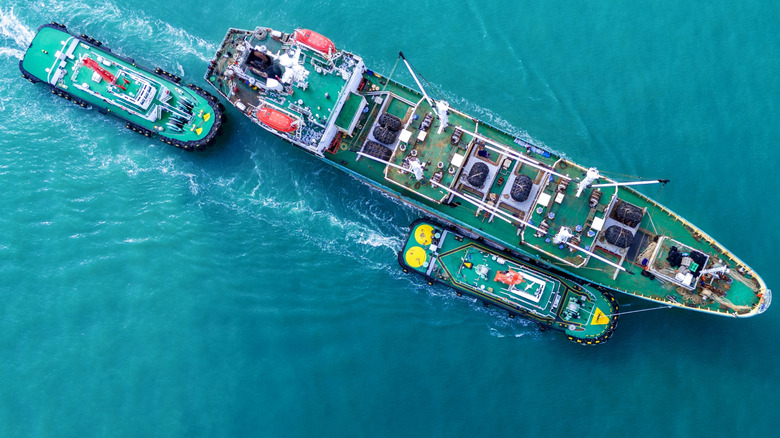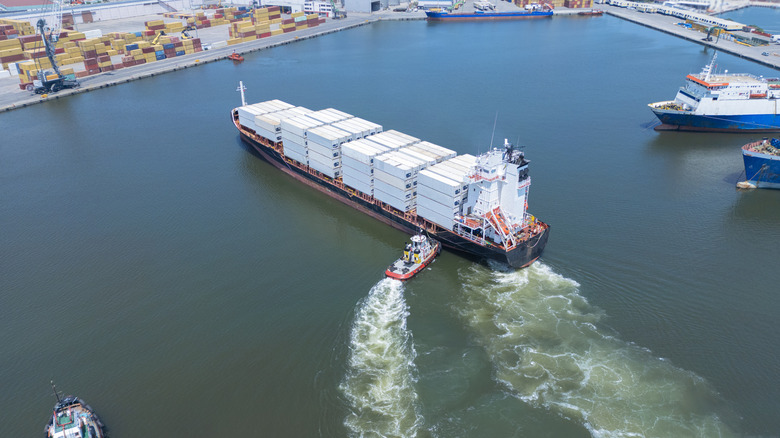Why Do Tugboats Sit So Low In The Water?
Tugboats have a big job ahead of them — towing and pushing larger vessels takes a lot of strength and power. To accomplish this, tugboats have a very specific design, including how they sit in the water. While strength and speed play a significant role, it's equally important that tugboats have stability, which is why tugboats sit so low below the surface.
Tugboats are not massive; no matter what type of tugboat, they get their power from consistent design elements, including how low they sit in the water — sometimes referenced as a "deep draft." While it initially looks like tugboats are floating flat atop the water's surface, they're actually very low under the surface to give them better stability. The resistance against water that this creates increases traction, which adds more power to propel the tugboat forward. Some tugboats add to this design strategy by carrying concrete and iron below the engines: The weight keeps the boat sitting low in the water, adding to its stability and power.
When are tugboats needed?
Tugboats' blend of engine power and clever design allows them to pull up to 1,000 times their own weight — this means they can pull vessels as large as aircraft carriers. But why do these large ships need a tugboat to move through the water?
Tugboats are used when a large vessel attempts to maneuver in a narrow area, usually a port or harbor. There are plenty of tugboats that never even leave the harbor, guiding ships to docks by pulling and pushing them around that tight area. Guiding large vessels around this cramped space is why tugboats must sit low in the water — that stability is not only necessary for handling and agility, but can also keep tugboats stable even if they bump against something. This includes bumping the larger ships themselves — tugboats often nudge the ship side to side to steer them through narrow spots.

